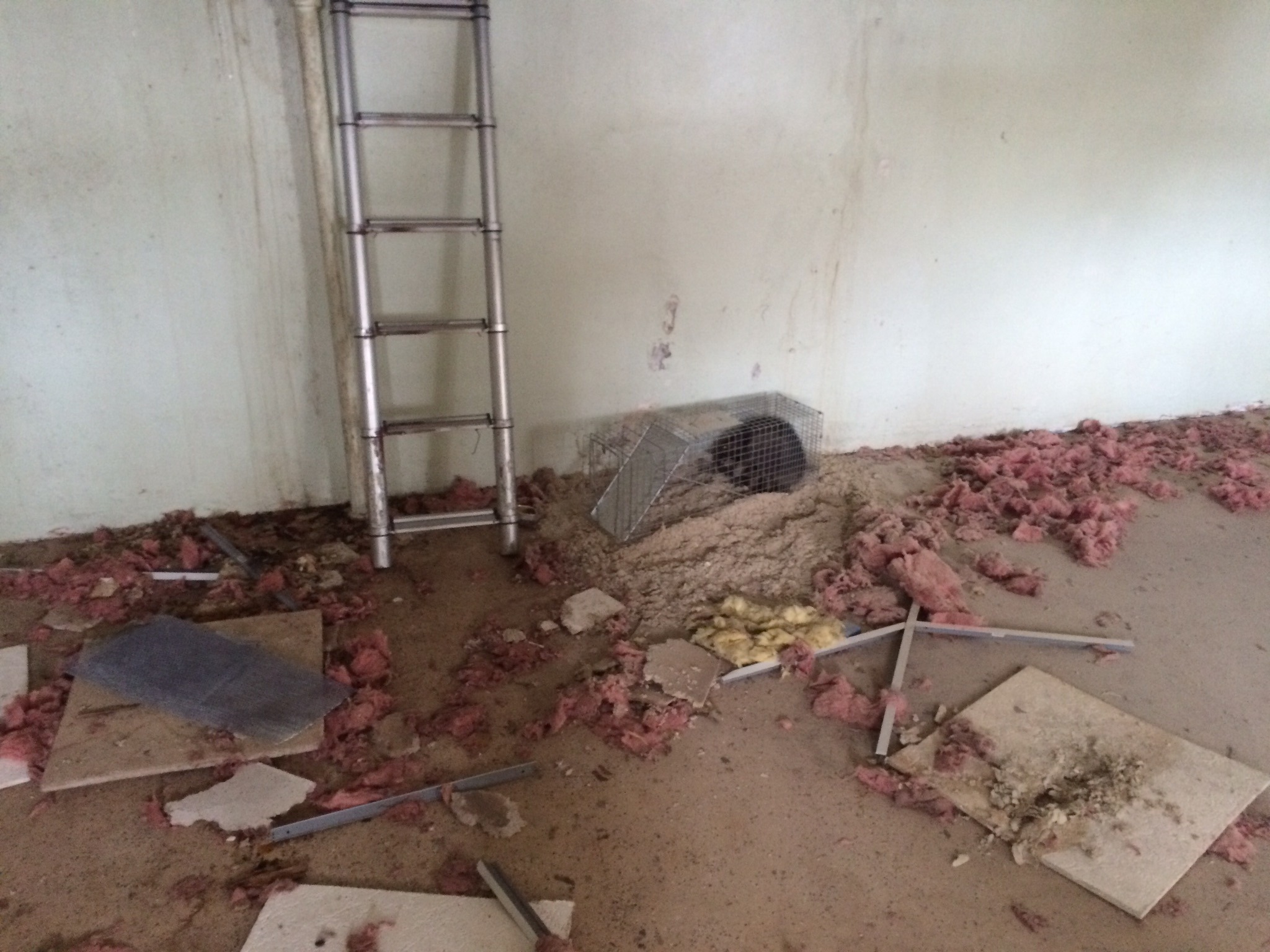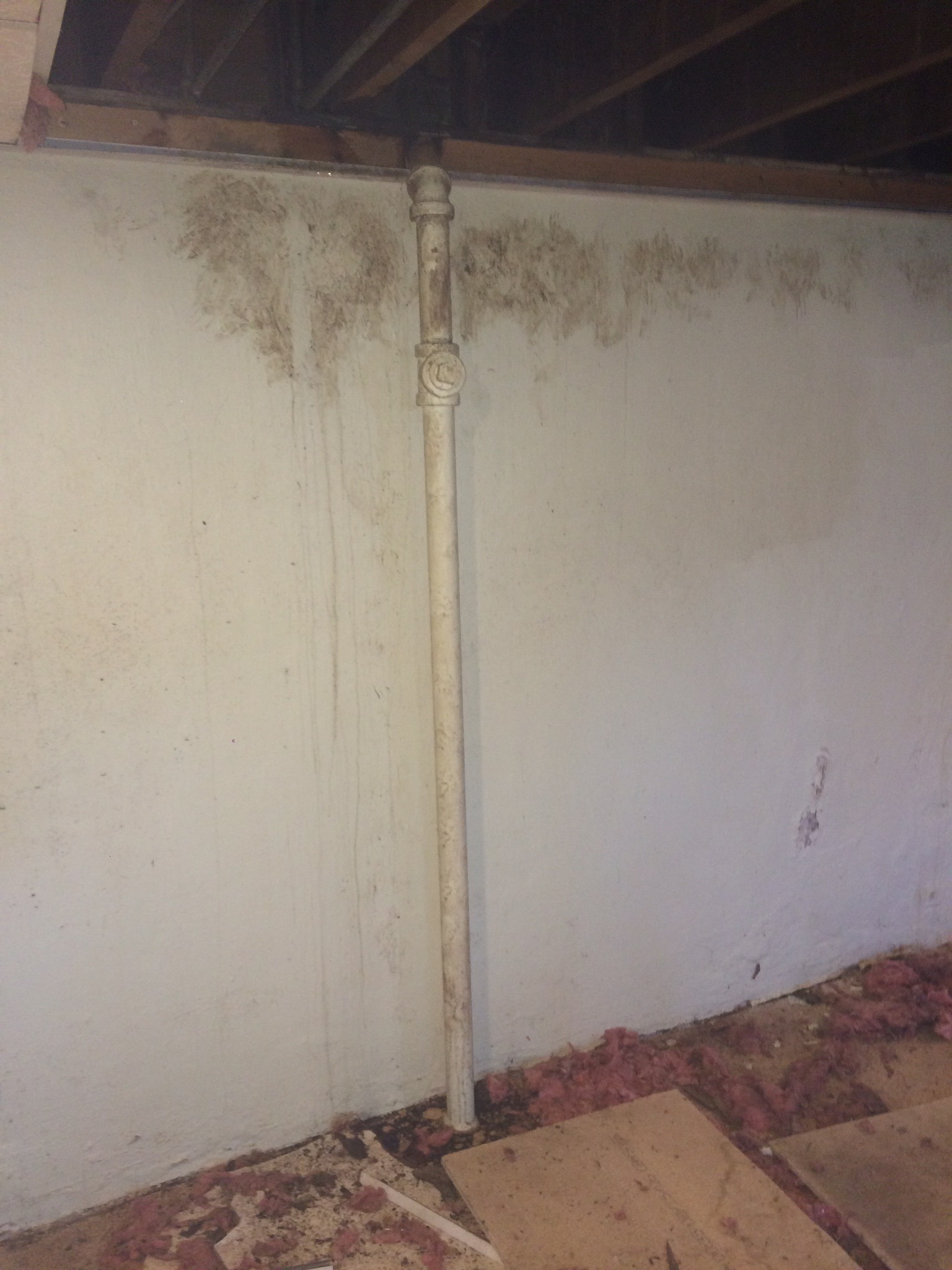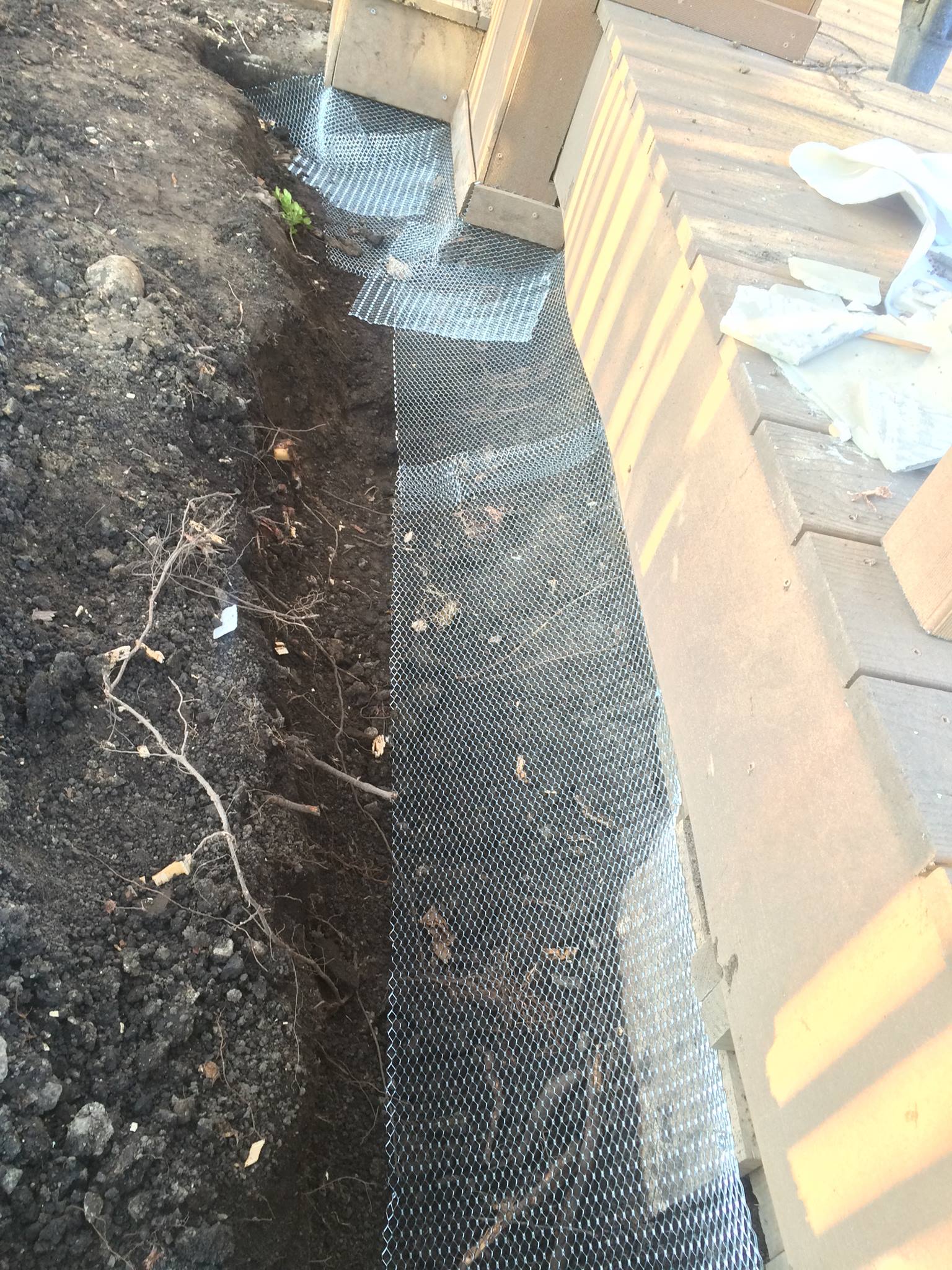Raccoon Removal

Contents
- 1 Raccoon Removal
- 1.1 Key Takeaways
- 1.2 Raccoon Removal Services by U.S. Wildlife Removal Service
- 1.3 Dangers of Raccoon Infestation
- 1.4 Signs of a Raccoon Infestation
- 1.5 Raccoon Habitat and Entry Points
- 1.6 Professional Raccoon Removal
- 1.7 Common Areas For Raccoon Infestations
- 1.8 Raccoon Damage Repairs
- 1.9 Raccoon Proofing & Exclusion
- 1.10 Frequently Asked Questions
Ever wondered if raccoons can be safely removed from your property? Well, we’re here to tell you that they absolutely can! At U.S. Wildlife Removal Service, we specialize in raccoon removal and we’re ready to serve you. Dealing with a raccoon infestation can be a real nuisance, not to mention the potential dangers they pose. That’s why it’s important to call in the professionals. Our team of experts is trained to handle these pesky critters safely and efficiently. We know all the common areas where raccoons like to set up camp, and we’ll make sure they’re removed and kept out for good. Don’t let raccoons wreak havoc on your property any longer – let us take care of it for you!
Key Takeaways
- Professional raccoon removal services ensure safe and efficient removal of raccoons from your property.
- Raccoons can cause significant damages to property, including insulation and electrical wires.
- Raccoons carry diseases such as rabies and roundworm, posing serious health risks to humans.
- Promptly addressing raccoon infestations is crucial to mitigate potential dangers.
Raccoon Removal Services by U.S. Wildlife Removal Service
Here at U.S. Wildlife Removal Service we offer professional raccoon removal services. We understand the importance of raccoon prevention and providing humane raccoon removal methods. Our team is dedicated to serving you and ensuring the safety of your property. If you have noticed signs of raccoon activity, such as overturned trash cans or damaged gardens, it is vital to address the issue promptly. We are here to help you with effective raccoon control methods that are both safe and environmentally friendly. While there are DIY raccoon deterrents available, it is always recommended to seek professional assistance to ensure the best results. Let us take care of the raccoon removal process, so you can have peace of mind knowing that your property is protected.
Dangers of Raccoon Infestation
Let’s talk about the dangers of raccoon infestation. When raccoons invade our homes, they can cause significant damages to our property, including tearing apart insulation and chewing on electrical wires. Additionally, raccoons carry diseases such as rabies and roundworm, which can pose a serious threat to our health. Another concern is the accumulation of raccoon feces, which can spread parasites and bacteria, leading to further health risks. It’s important to address raccoon infestations promptly to mitigate these potential dangers.
Raccoon Damages

When dealing with a raccoon infestation, we must be aware of the damages and potential dangers they can cause. Raccoons can wreak havoc on our property and pose risks to our health and safety. Raccoon damage prevention is crucial to protect our homes and belongings. Understanding raccoon behavior patterns can help us anticipate their actions and take necessary precautions. Implementing raccoon deterrent methods such as securing trash cans, sealing entry points, and using motion-activated lights can discourage raccoons from invading our space. It’s also important to address raccoon habitat destruction by preserving natural habitats and reducing food sources. Lastly, raccoon population control through humane trapping and relocation can help prevent future infestations. By being proactive and vigilant, we can minimize the damages and dangers associated with raccoon infestations.
Raccoon Diseases
Understanding raccoon behavior patterns involves recognizing the risks associated with raccoon infestations, particularly the potential dangers of contracting raccoon diseases. Raccoons can carry several diseases that can be transmitted to humans, including rabies, leptospirosis, and roundworm. These diseases can be spread through contact with raccoon saliva, urine, or feces. It is essential to take precautions to prevent raccoon infestations and minimize the risk of disease transmission. Simple raccoon prevention methods such as securing garbage cans, sealing off entry points, and removing potential food sources can help reduce the likelihood of raccoon infestations. Additionally, understanding raccoon communication and behavior can help identify signs of a potential infestation. Remember, raccoons are adaptable creatures, and their habitat can extend from forests to urban areas. By being aware of the risks and taking appropriate measures, we can protect ourselves and our communities from raccoon-related diseases.
Raccoon Feces Accumulation

Alright, let’s talk about the dangers of raccoon infestation and specifically focus on the accumulation of raccoon feces. One major concern is raccoon roundworm, a parasite found in their droppings that can be harmful to humans and pets. This parasite can cause serious health issues if ingested or inhaled, so it’s crucial to address raccoon feces accumulation promptly to prevent any potential risks.
Raccoon Roundworm
We have encountered numerous cases where a significant number of raccoons have invaded and left their feces in residential areas, leading to the dangerous accumulation of raccoon roundworm. This parasite can cause serious health risks if not treated promptly. Signs of raccoon roundworm infection include nausea, fatigue, and loss of muscle control. To prevent transmission, it is important to practice good hygiene and regularly clean up raccoon feces. If you suspect an infestation, seek professional raccoon roundworm treatment immediately.
Signs of a Raccoon Infestation
| Sign of Infestation | Description |
|---|---|
| Overturned Garbage Bins | Raccoons looking for food can knock over trash cans. |
| Raccoon Tracks | Tracks similar to handprints near your home indicate their presence. |
| Noises in Attic | Scratching or thumping sounds at night may be raccoons. |
| Raccoon Droppings | Droppings are a health hazard and a sign of infestation. |
| Seeking Shelter | Raccoons may try to nest in homes, especially in colder weather. |
Raccoon Habitat and Entry Points
Efficient removal of raccoons from your property necessitates thorough understanding of raccoon habitat and entry points, ensuring comprehensive management of their presence.
- Raccoon Denning Habits
- Raccoons’ natural habitat is wooded areas near water, but they have adapted to thrive in human environments.
- Common denning sites include hollow trees, ground burrows, brush piles, and abandoned animal burrows.
- Common Raccoon Entry Points
- Raccoons often infiltrate buildings, particularly when females are primed to raise litters.
- They can access homes through unsecured chimneys, vents, siding, and attic fans.
Professional Raccoon Removal

So, when it comes to dealing with a raccoon problem, it’s important to consider professional raccoon removal services. These experts offer a range of services that can effectively address the issue. First, they conduct a thorough inspection of your property to identify all potential entry points and assess the extent of the infestation. Then, they employ trapping techniques to safely and humanely remove the raccoons. Finally, they implement raccoon exclusion methods to prevent future entry and ensure long-term success.
Full Inspection

During a full inspection for professional raccoon removal, our team carefully examines the entire property to identify any signs of raccoon activity. We start by looking for physical evidence such as tracks, droppings, and torn insulation. Raccoons are clever creatures, so we also search for less obvious indicators like claw marks on trees or damage to attic vents. Additionally, we inspect the exterior of the house for potential entry points, such as loose siding or gaps in the roof. Our goal is to locate the raccoon’s den and assess the extent of the infestation. Once the inspection is complete, we provide prevention tips to homeowners, such as securing trash cans and removing potential food sources. If necessary, we can offer DIY raccoon removal methods, but we highly recommend hiring professionals to ensure the safety and effectiveness of the removal process.
Raccoon Trapping
After completing a full inspection, our team begins raccoon trapping as part of our professional raccoon removal services. Raccoons can be persistent and resourceful creatures, so it’s important to use effective trapping techniques. We employ humane traps designed specifically for raccoons, ensuring their safety during the process. Our experts are well-versed in raccoon behavior, allowing us to strategically place traps in areas where they are most likely to be successful. Once trapped, we use appropriate removal methods to relocate the raccoons to a more suitable habitat. It’s important to note that prevention is key in avoiding future raccoon infestations. To help with this, we provide our clients with raccoon prevention tips, such as securing garbage cans and sealing potential entry points. By understanding raccoon habitat preferences and employing effective trapping techniques, we can ensure a successful and humane raccoon removal process.
Raccoon Exclusion
To continue ensuring a successful and humane raccoon removal process, we specialize in raccoon exclusion as part of our professional services. Raccoon exclusion is an essential step in preventing future raccoon infestations and minimizing damage to your property. Our experts are trained to identify and seal off all potential raccoon entry points, such as gaps in the roof, chimneys, and vents. By blocking off these access points, we effectively control raccoon populations and prevent them from causing further damage to your home or business. Our raccoon exclusion methods are safe and effective, ensuring that raccoons are unable to reenter your property once they have been removed. Don’t let raccoons take over your space – let us handle the raccoon prevention and control for you.
Common Areas For Raccoon Infestations
Alright, let’s talk about the common areas where raccoons like to make themselves comfortable. We’ve got the attic, where these critters can squeeze through small openings and settle in for some cozy nesting. Then there’s under decks, where raccoons find shelter and protection. Don’t forget about chimneys, which can become a raccoon’s private entrance to your home. And last but not least, the roof, where raccoons can cause damage and create quite a ruckus.
Raccoons in The Attic

We frequently encounter raccoons in the attic, as it is one of the most common areas for raccoon infestations. Raccoons are notorious for their adaptability and resourcefulness, which can make them quite a nuisance when they decide to take up residence in your home. These critters are skilled climbers, and they can easily gain access to your attic through various entry points such as damaged vents, loose shingles, or even gaps in the roof. Once inside, raccoons can cause extensive damage by tearing insulation, chewing on wires, and leaving behind their droppings. To prevent raccoon infestations in the attic, it is important to inspect your home for potential entry points and promptly seal them off. If you suspect that raccoons have already made their way into your attic, it is best to contact a professional for safe and effective eviction methods.
Raccoon Under Decks
One common area for raccoon infestations is underneath decks, which can pose a significant problem for homeowners. Raccoons are attracted to the shelter and protection that decks provide, making it an ideal spot for them to nest and breed. To prevent raccoon infestations under decks, homeowners can take steps to deter them. This includes removing any potential food sources, such as bird feeders or pet food, and sealing off any openings or gaps that raccoons can use to access the space. Signs of raccoon presence under decks include droppings, tracks, and damage to the deck or surrounding areas. If homeowners suspect a raccoon infestation, they should consider calling professional raccoon removal experts to safely and effectively resolve the issue. Understanding raccoon behavior patterns can also help in preventing future infestations.
Raccoons in Chimney

Chimneys are a common area for raccoon infestations, as they provide shelter and protection for these animals. Raccoons are known for their agile climbing abilities, which makes accessing chimneys an easy task for them. Once inside, raccoons often build their nests in the flue or chimney cavity, where they can safely give birth and raise their young. Raccoons can enter chimneys through damaged or missing chimney caps, loose mortar, or even uncapped flues. To remove raccoons from chimneys, it is important to hire professionals who can safely and humanely relocate them. Additionally, preventing raccoon infestations in chimneys can be achieved by installing sturdy chimney caps, sealing any entry points, and trimming tree branches that provide easy access to the chimney.
Raccoons on the Roof

After infiltrating chimneys, raccoons often make their way onto the roof, seeking out common areas for infestations. Raccoons can cause significant roof damage if left unchecked. They are known to tear holes in shingles and create entry points for water and other pests. Understanding raccoon behavior is crucial in preventing and controlling infestations on the roof. Raccoons are excellent climbers and can easily access roofs by using nearby trees, downspouts, or even overhanging branches. To prevent raccoon infestations on the roof, it is important to trim overhanging branches, secure downspouts, and remove any potential food sources like bird feeders. If you have a raccoon problem on your roof, there are several removal methods available, including live trapping and relocation. It is recommended to seek professional help for safe and effective raccoon removal.
Raccoon Damage Repairs

To begin addressing raccoon damage repairs, we will outline the necessary steps for assessing and repairing any structural damage caused by raccoons. First, we need to conduct a thorough raccoon damage assessment to identify all the affected areas. This includes checking for chewed wires, torn insulation, and damaged roofing. Once the assessment is complete, we can move on to raccoon damage restoration. This involves repairing or replacing any damaged materials, such as repairing broken beams or replacing chewed wiring. Additionally, we must implement raccoon damage prevention measures to prevent future incidents. This may include sealing any entry points, installing deterrents, and trimming tree branches near the property. Lastly, ongoing raccoon damage control and mitigation efforts are essential to ensure the property remains raccoon-free and protected.
Raccoon Proofing & Exclusion

Once we have completed the necessary raccoon damage repairs, we consistently employ raccoon proofing and exclusion measures to ensure long-term prevention. Raccoon prevention is crucial to avoid future infestations. Effective exclusion is key, and we use various wildlife control methods to achieve this. We carefully inspect the property for any potential entry points, such as gaps in the roof, vents, or cracks in the foundation. We seal these openings with durable materials that raccoons cannot easily break through. Additionally, we install raccoon deterrents, such as motion-activated lights or sprinkler systems, to discourage raccoon activity. It is important to be vigilant and look out for signs of raccoon activity, such as knocked over trash cans or damaged gardens. By implementing these preventive measures, we can ensure a raccoon-free environment for the long term.
Frequently Asked Questions
How Long Does It Typically Take to Remove Raccoons From a Property?
On average, it takes us a few days to remove raccoons from a property. We use effective techniques that minimize environmental impact. Common entry points are sealed to prevent future visits. Professional methods are recommended over DIY approaches.
Are Raccoons Dangerous to Humans?
Raccoons can be dangerous to humans due to their aggressive behavior and the diseases they carry. It’s important to understand their habits and take precautions to avoid encounters. Relocation is often necessary for both safety and peace of mind.
How Much Does Professional Raccoon Removal Cost?
Professional raccoon removal can vary in cost depending on factors such as the size of the infestation and the location. However, it’s important to consider the costs of DIY removal, including potential damage and the need for permits.
What Steps Can I Take to Prevent Raccoon Infestations in My Home?
To prevent raccoon infestations in our home, we can take several steps. We should focus on raccoon prevention by using effective deterrents, insulating our home, securing garbage, and installing outdoor lighting.
